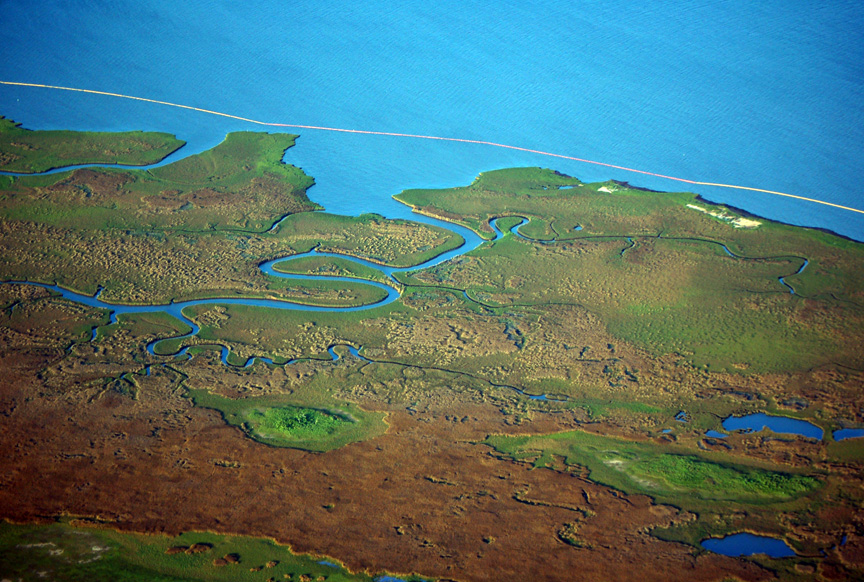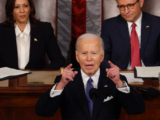
This shows the beauty and grandeur of the Mississippi River Delta as it meets the Gulf of Mexico: Glynn Wilson
Staff Report –
WASHINGTON, D.C. — In case you were wondering how the administration was spending the money allocated under the Bipartisan Infrastructure Law passed in November, 2021, the availability of $6 million in funds was announced Monday to support Tribal Nations across the Mississippi/Atchafalaya River Basin to reduce nutrient pollution in the third largest river basin in the world, after the Amazon and the Congo.
Related: Congressional Passage of the $1.2 Trillion Infrastructure Investment and Jobs Act is Huge
The Mississippi River originates as a tiny outlet stream from Lake Itasca in northern Minnesota. During a meandering 2,350 mile journey south to the Gulf of Mexico, the Mississippi is joined by hundreds of tributaries, including the Ohio and Missouri Rivers. Water from parts or all of 31 states drains into the Mississippi, and creates a drainage basin of over 1,245,000 square miles. Before reaching the Gulf, the Mississippi meets up with a distributary, the Atchafalaya River.
The announcement on Monday came from the U.S. Environmental Protection Agency (EPA), which points out that the total package funded in the bill includes $60 million for actions to support water quality improvements in the Mississippi River watershed and Gulf of Mexico through the Gulf Hypoxia Program over five years. EPA is allocating 10 percent of this funding – a total of $6 million – to 21 eligible Tribes to support capacity building activities and nutrient reduction demonstration projects that advance the goals of the action plan.
“The Biden-Harris Administration is committed to working alongside Tribes to advance our shared goal of improved water quality,” Assistant Administrator for Water Radhika Fox said in making the announcement. “Thanks to the historic Bipartisan Infrastructure Law, Tribes across this critical watershed will have resources to restore the Mississippi River and Gulf of Mexico.”
An implementation memorandum agreement was included that provides eligible Tribes with information on how EPA will award and administer the funds, highlights priorities for nutrient reduction, and provides flexibility for Tribe-specific activities. With these awards, Tribes will support nutrient reduction demonstration projects, implement non-point source management programs, and build their capacity to conduct nutrient reduction activities.
EPA has long supported the Hypoxia Task Force with general support for Tribal and state water quality programs and targeted grants to states. The Bipartisan Infrastructure Law provides for dedicated funding to support Tribal nations, make progress towards reducing nutrient loads, and improve water quality in the Mississippi/Atchafalaya River Basin.
“Improving water quality in the watershed is critical for helping support families, economies and communities that rely on this critical waterbody,” the agency release says.
Background
The Mississippi River/Gulf of Mexico Watershed Nutrient Task Force is a long-standing group of states, federal agencies, and a representative for Tribal nations that work collaboratively to reduce the large oxygen-depleted “dead zone” in the Gulf of Mexico and improve water quality throughout the Mississippi/Atchafalaya River Basin. Under the Bipartisan Infrastructure Law, EPA is providing a historic $50 billion to support state and Tribal investments in clean and safe water, and empower historically underserved and underrepresented communities with tools to improve their environmental conditions, including this allotment to Tribal nations under the Gulf Hypoxia Program.
For further information see the Memorandum of Agreement













